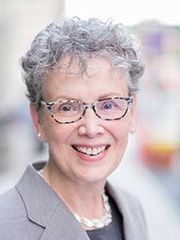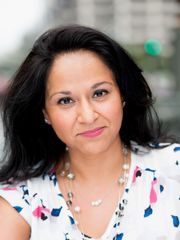Cultural Competence Vital to City

About a year ago, I had the privilege to participate in a pilot program that turned out to be one of the most transformative experiences of my life. The Cincinnati Regional USA Chamber of Commerce launched its inaugural Building Cultural Competence Program, which brought together roughly 30 community leaders to discuss and explore our personal levels of cultural awareness.
I went into the program confident in my depth of understanding and knowledge of diversity and different cultures. After all, I have traveled the world and my work as a journalist puts me in contact almost every day with people of different races, ethnicities, religions, genders, sexual orientations, political leanings and socio-economic backgrounds. I entered the program with an open mind, but honestly, I didn’t expect it to add much more to my already “sophisticated” mindset.
Boy, was I dead wrong. The chamber’s program exposed both my hubris and how much room I had for growth. The experience was humbling, exhilarating and energizing at the same time.
Learn more: Building Cultural Competence
Explore: Take the Harvard Implicit Association Test
As the chamber prepares to launch its second Cultural Competence class later this month, I thought it would be valuable for our readers to see some of the powerful work that is being done in Cincinnati to break down barriers and bring us closer together. Too often, we watch or read about our divisions and differences and not enough about how to overcome them.
Below five participants from the inaugural Cultural Competence program talk about their experiences and how it has changed them. And the program’s leaders and facilitators, Mary Stagaman, senior inclusion advisor for the chamber, and Priya Dhingra Klocek, president and CEO of Consultant on the Go LLC, give a brief synopsis the program and its goals in the question-and-answer.
Q: What is cultural competence?
A: Mary Stagaman: “We define cultural competence as the ability to adapt our communication style and our behavior in order to bridge differences and to accomplish business results.”
Priya Dhingra Klocek: “The only thing I would add to that is how do we show up as our whole self? You know how you show up and you are aware of it, and you adapt based on your environment, whether it’s communication styles, thinking styles. It’s considering who’s in the room and how do I need to be… how to do I engage with others to accomplish common goals.”
Q: Why is it important for each of us to be aware of our level of cultural competence?

Mary Stagaman
A: Stagaman: “When people think about their level of cultural competence, they usually evaluate it higher than it actually is. Why should we care? At the chamber, we look at this through a business lens. When we look at the companies we have in this market, we know that their workforce is changing. We know their markets in this country are changing and developing, and we know they are developing markets around the globe. So if they are to be successful in their business, they need a workforce that is able to successfully move across cultures, to understand enough about cultures other than their own to be a part of a team that develops a whole new product line that speaks to a particular cultural identity, or be prepared to move to a job on the other side of the globe. So people have to have that ability to work with people whose backgrounds and cultures are very different than their own. Enhancing your cultural competence is a way of bridging those gaps. It’s a way of getting comfortable walking into a room full of people where you may be the minority, which is a fairly new experience for many of us.”
Q: You’ve made the business case for cultural competence. Why is it critical for us as individuals?
A: Stagaman: “Think about it in terms of the neighborhood you live in now and how it might be changing around you. Who lives on your street today who didn’t before. Have you really reached out to that immigrant family who wasn’t there five years ago? There are lots of opportunities for conflict in our own families, where we might have very different worldviews – just look at the current political debate nationally. There are all kinds of opportunities for people to end up very polarized because people don’t have the set of tools or skills that allow them to lean into those differences or conflicts and have a conversation where we try to understand each other more. Our inability to bridge those divides is actually tearing away at the fabric of our Republic right now.”
Q: What are the various stages along the cultural competence continuum?

Priya Klocek
A: Klocek: “It starts with ‘denial.’ Denial is a place where we may not understand or recognize that culture has anything to do with our behavior, that culture can influence who we are, our worldview and how we show up. Individuals who are in denial often like to stay with people who are like them. When differences show up they get more in their corner.
Next is ‘polarization.’ Polarization is a place where we start to view the world as ‘us’ and ‘them.’ In this phase, I can show up in two different ways. In the first way, I look at my cultural worldview in a more positive light and I look at other cultures through a more critical lens. The other way is where I look at the different culture in a more positive light and I look at my own culture and worldview more critically. In polarization, we are not building bridges…we are looking to convert others because my way is the better way.
‘Minimization’ is where the majority of individuals end up. In minimization, we tend to focus more on similarities and ignore the differences. Someone in minimization won’t want to talk about differences because If you talk about differences those differences are going to divide us, so let’s focus on what we have in common.
‘Acceptance’ is a place where we start to recognize there are differences, and though we might not totally get them, we start to seek to understand the difference. Acceptance doesn’t mean I agree with your difference. All it means is that you and I have something in common that holds us together – it could be the work we do, the community we live in, etc. There are differences at play and we are going to acknowledge them and try to understand to build a deeper relationship.
Finally there is ‘adaptation.’ Adaptation is the place where I take the information that I have about the difference and I adapt my behavior. As a leader, I know what room I am walking into, what group am I engaging with. I’m aware of the nuances in the room, for example, communication styles, generational differences, etc. and I adapt my message or my way of engaging. It recognizes that there is no one way to engage. Can I show up as myself, while adapting to make every person feel valued?”
Yung: True understanding resides on the other side
Dich: Empathy starts with honesty
Cheek: Difference between adaptation, assimilation
Partridge: Change begins at the point of self-understanding
Reiser: It’s important that we own who we are
Bell: Cultural growth is slow, but it is coming
Boyd: A willingness to change nurtured new relationships
Original article by Opinion Editor, Kevin S. Aldridge | Cultural Competence Vital to City


